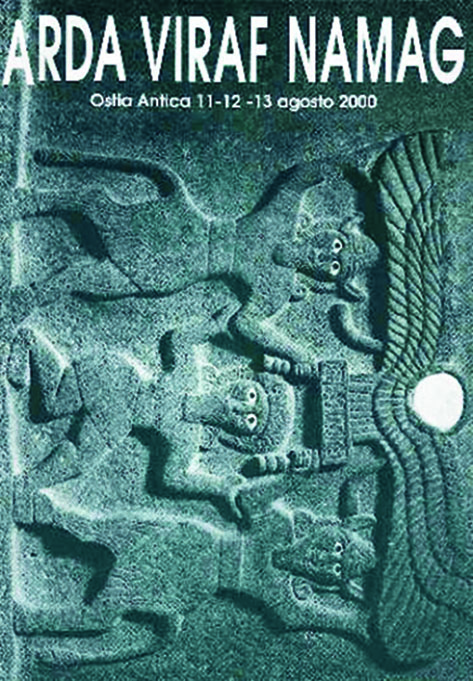 After the invasion of Alexander and the fall of the mighty Achaemenian Empire, the Zoroastrian religion had a setback. The Greeks tried hard to Hellenize Iran and impose their beliefs and culture on the Iranian people. To some extent, they succeeded. However, some provinces like Pars continued to offer stiff resistance. Soon followed the rise of the Parthian Empire, and the religion of Zarathushtra began gaining strength. However, it was under Ardashir Babagan (226 – 240 AD), the founder of the Sasanian dynasty, that Zoroastrianism really flourished and was institutionalized into a powerful, vibrant state religion. A number of Atash Bahram (Fire of Victory) were established and ancient texts were recompiled.
After the invasion of Alexander and the fall of the mighty Achaemenian Empire, the Zoroastrian religion had a setback. The Greeks tried hard to Hellenize Iran and impose their beliefs and culture on the Iranian people. To some extent, they succeeded. However, some provinces like Pars continued to offer stiff resistance. Soon followed the rise of the Parthian Empire, and the religion of Zarathushtra began gaining strength. However, it was under Ardashir Babagan (226 – 240 AD), the founder of the Sasanian dynasty, that Zoroastrianism really flourished and was institutionalized into a powerful, vibrant state religion. A number of Atash Bahram (Fire of Victory) were established and ancient texts were recompiled.
Unprecedented Spiritual Exercise
An important and historic spiritual exercise undertaken during the reign of Ardashir Babagan was to spiritually transport the soul of a pious priest named Arda Viraf into the spiritual world. It is said Ardashir assembled forty thousand Zoroastrian priests and from among these, he selected four thousand, short listing them further to four hundred and then forty. From the forty priests, he selected seven on the basis of their learning, wisdom and piety. Among the seven, Arda Viraf was found to be the most pious and, therefore, a worthy candidate for the spiritual exercise or khalla-e-Badan (astral protection of the soul into the other world).
It is said, the pious Arda Viraf entered an Atash Bahram called Adar Khordad (Fire of Perfection), offered prayers and drank a special consecrated wine. Thereafter, he went into a spiritual trance for seven days, with forty thousand priests sitting around him, offering prayers and keeping a round-the-clock vigil. Arda Viraf is probably the first human being to have experienced what a human soul undergoes at the time of death, traverse the different spiritual regions and return to the physical body, after a long span of seven days. It was a miracle which rekindled the faith among Zoroastrians in early Sasanian Iran.
Journey Into The Other World
It is said, with the aid of Bahman (Divine Wisdom), Ardibehest (Divine Truth) and Sarosh (Divine Consciousness – also the guardian of the souls of the living and the dead), the pious soul of Arda Viraf was able to perceive and experience the fate of various souls in the spiritual world.
The pious Dastur’s soul returned to his physical body on the eighth day after its sojourn in wahisht (heaven), dozakh (hell) and hamtstagan (purgatory). His experience of these worlds, or ‘planes of existence’, or ‘states of consciousness, were recorded in a text named, ‘Ardaz Wiraz Namag’. Some scholars believe that this text was actually written in the 9th Century i.e. after the fall of the Sasanian dynasty. It’s more likely that the text is a recompilation of the original, written during the reign of Ardashir Babagan.
The Ardaz Wiraz Namag was a very popular text – both in Iran and subsequently among Parsis in India, since it helped people desist from sin and distinguish right from wrong. This ancient text upholds the principle of Divine Justice, in accordance with Gathic precept of ‘Good unto the doers of good and evil unto the doers of evil’.
Fate Of The Soul
Arda Viraf provided a graphic description of heaven, hell and purgatory. The souls of those who follow the path of Asha (Truth and righteous conduct) rejoice in heaven while those who follow the Druj (lies and evil), suffer in hell. Arda Viraf however claimed that the punishment for the soul in hell is always proportionate to the wicked deeds performed on earth. Those whose good and bad deeds are in proportion spend time in purgatory.
According to the Ardaz Wiraz Namag, after traversing the spiritual regions, the pious Dastur had a vision of Ahura Mazda, who proclaimed once again to Arda Viraf what he had proclaimed to Zarathushtra, “There is only one path, that of righteousness. All other paths are false.”
It is important to note, that generally trance utterances are written or caused to be written while the person is in a state of trance or higher consciousness. Arda Viraf, on the other hand, described his experiences after returning from his trance.
Influence On Dante
It is believed, many centuries later, Arda Viraf’s experience inspired Dante to write ‘The Divine Comedy’ – a long narrative poem written in Italian (circa 1308–21) by poet Dante Alighieri. It is considered as one of the world’s great works of literature.
Divided into three major sections — Inferno, Purgatorio, and Paradiso — the narrative traces the journey of Dante from darkness and error, to the revelation of the Divine Light, culminating in the Beatific Vision of God. Dante is guided by the Roman poet – Virgil, who represents the epitome of human knowledge, from the dark wood through the descending circles of the pit of Hell (Inferno).
Passing Lucifer at the pit’s bottom, at the dead centre of the world, Dante and Virgil emerge on the beach of the island mountain of Purgatory. At the summit of Purgatory, where repentant sinners are purged of their sins, Virgil departs, having led Dante as far as human knowledge is able, to the threshold of Paradise. There Dante is met by Beatrice, embodying the knowledge of divine mysteries bestowed by Grace, who leads him through the successive ascending levels of heaven to the Empyrean, where he is allowed to glimpse, for a moment, the glory of God!
- Lessons From The Desert Province Of Yazd - 15 June2024
- Spiritual Might And Myths Of Holy Mountains - 8 June2024
- સ્વર્ગ અને નરકની એક ઝલક - 1 June2024
